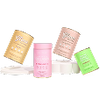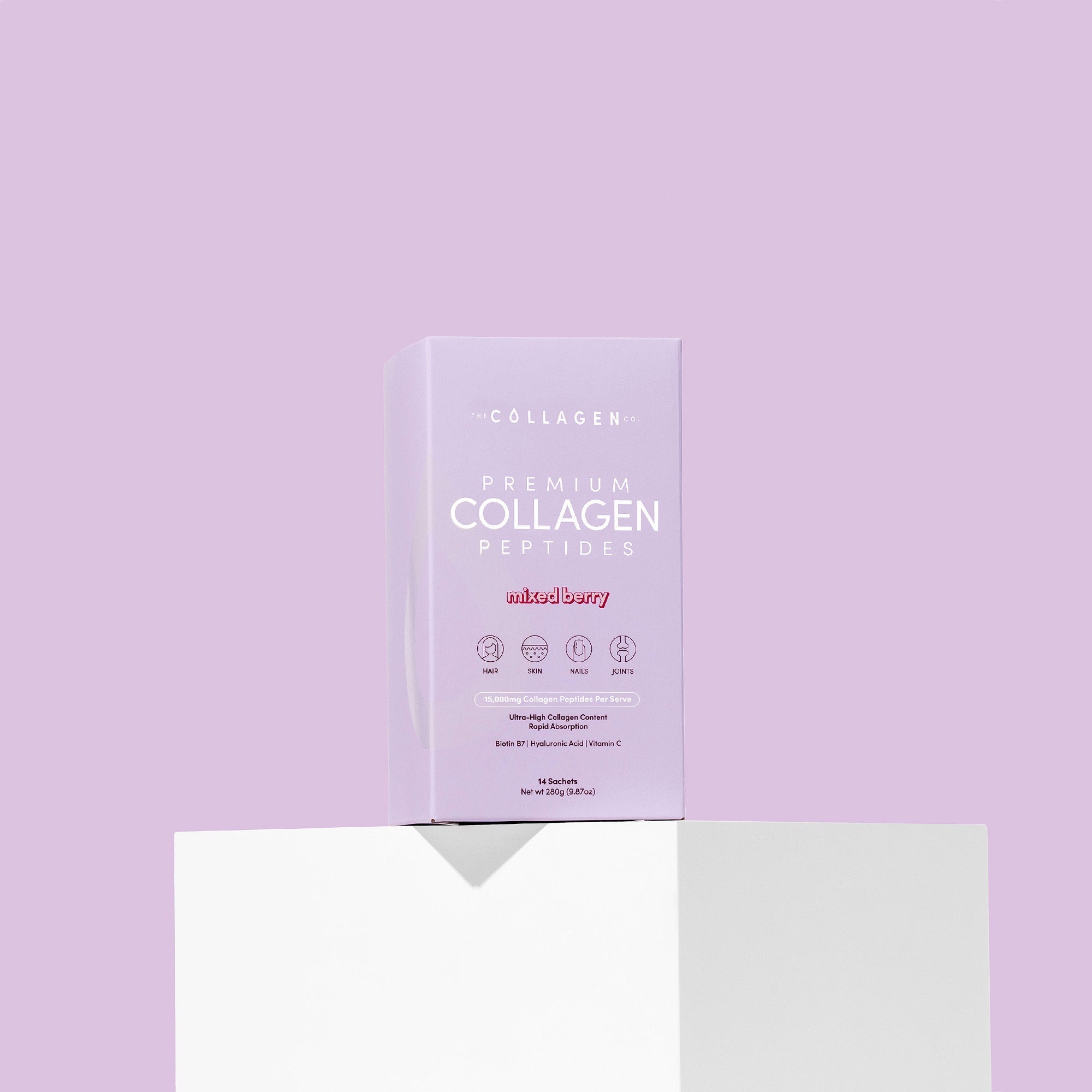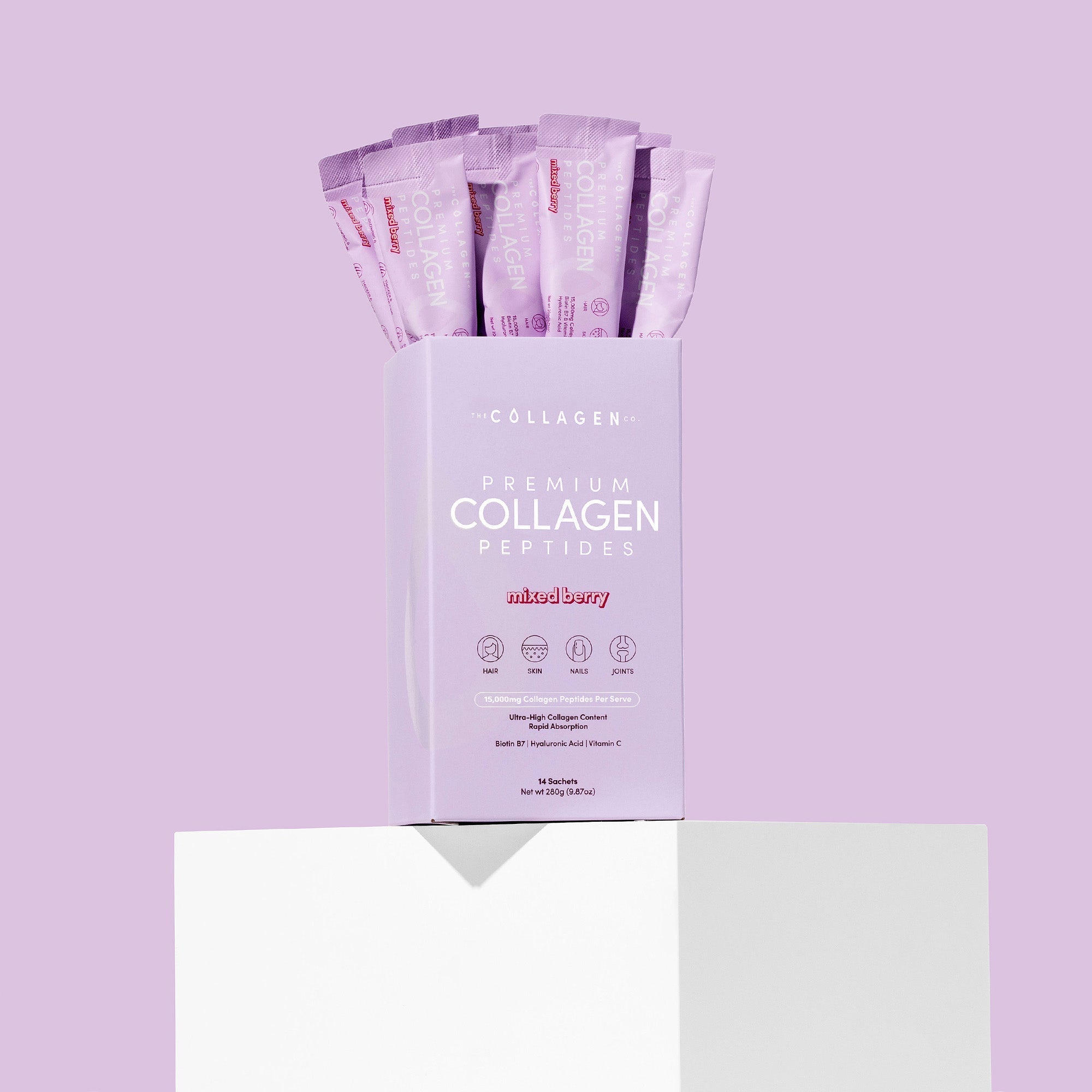How to Restore Collagen in Your Face
Posted 11th October 2021

You're hurrying through your morning routine to take on a brand-new day – brushing your teeth, washing your face, applying your moisturizer… and suddenly, your heart drops. Are your cheeks looking more hollow than usual? What about those fine lines under (and around) your eyes? Weren’t they less obvious just yesterday? Uh-oh. It looks like all those “beauty experts” and countless research papers were right. Our natural collagen production indeed decreases as early as our 20s. Thankfully, along with this awareness, also came science-based knowledge on how to restore collagen in the face (naturally) – enabling us to keep our skin supple and firm even as time passes us by.
Below, find 4 strategies you can leverage to achieve the youthful and bouncy skin of your dreams.
4 Strategies to help you maintain the collagen in your face naturally
#1: Prioritize foods rich in proline, glycine, and copper
Why the nutrients, proline, glycine, and copper, in particular? Well, you can find the answer in collagen’s synthesis process. See: to build collagen, your body makes procollagen – a precursor for which all collagen starts. And now … guess what procollagen is made up of? That’s right. Proline and glycine (both essential amino acids). In fact, glycine and proline contribute up to 57% of collagen's total amino acids content. Thus, this suggests that you may be able to stimulate your body's natural production of collagen by making sure you get plenty of proline and glycine. And don't worry; doing so isn't difficult at all.
For example, you can easily find large amounts of proline in dairy products, egg whites, wheat germ, cabbage, asparagus, and mushrooms. So … maybe make yourself a green juice? On the other hand, Glycine can be found in various protein-containing foods – including pork skin, chicken skin, and gelatin. As to the reason behind copper's importance to collagen synthesis? As it turns out, this mineral activates lysyl oxidase, an enzyme key to stabilizing collagen fibrils and for the integrity and elasticity of mature elastin. So, yes. Super important. Foods rich in copper include liver, oysters, dark chocolate, and leafy greens.
#2: Eat – and apply – vitamin C
In addition to proline, glycine, and copper, another nutrient you should get more of through your diet is vitamin C. That’s because vitamin C (which is readily available in various citrus fruits) serves as a co-factor for the enzymes prolyl and lysyl hydroxylase, enzymes responsible for the stabilization and cross-linking of collagen molecules. Don’t just stop at eating vitamin C to reverse the signs of aging, either.
You can also apply it to your face. Topical vitamin C is absorbed directly into the topmost layers of your skin, allowing it to get to work immediately on accelerating the production of both collagen and elastin – in turn, smoothening texture, reducing fine lines and dark spots, and protecting against free radical damage. A 2002 study, for instance, found a statistically significant improvement in skin wrinkling on subjects using 10% topical vitamin C (compared to placebo) over 12 weeks.
#3: Be generous with the sunscreen
Ready for a harsh truth? Here it is. No matter how much proline, glycine, copper, or vitamin C you eat (or slather on your face), chances are, you’d still see wrinkles staring back at you in the mirror if you aren’t making sunscreen a part of your daily routine. The sun is the ultimate “skin-ager”. Natural sunlight contains – among other things – ultraviolet (UV) photons. These high-energy photons can penetrate through the middle layer of your skin (i.e., dermis), causing the abnormal buildup of elastin. The accumulation of elastin in your skin, in turn, produces enzymes that inadvertently break down collagen. Thus, explaining the link between UV exposure and premature aging of the skin.
Meaning? When it comes to how to maintain collagen in the face, being conscientious about your sunscreen application is a must. You can think of a sunscreen product that offers both UVA and UVB protection (offering at least SPF 30) akin to a thin bulletproof vest – stopping the UV photons before they can reach the “inner layers” of your face to inflict damage. An interesting statistic to note: this 2013 study finds that regular sunscreen use decreases skin aging by 24%!
#4: Try a collagen supplement
Let’s be honest. There are glaring shortcomings associated with relying on nutrient supplementation and religious SPF application to boost your body’s collagen production. First: the efficacy of nutrient supplementation (at stimulating collagen synthesis) ultimately hinges upon your body’s ability to take these “building blocks” – e.g., proline, glycine, and vitamin C – and produce collagen with them. And that, unfortunately, depends on factors like individual metabolism. As for SPF protection? Well, at its core, sunscreen only prevents collagen depletion from UV exposure. It doesn’t increase collagen production in the face per se.
Thankfully, for those wondering how to stimulate collagen production in the skin (for sure), there is an option available: collagen supplementation. Various studies have confirmed that taking collagen supplements can increase collagen density in the skin, reducing wrinkles and dryness and improving skin elasticity.
That said, you need to be extra careful when purchasing a collagen supplement. Take into consideration its amount of collagen per serving (ideally at least 15 grams to see the fastest results), the form of collagen (make sure it's hydrolyzed for better absorption), and the types of collagen it stimulates (preferably types 1,2 and 3). Find the screening process too tedious? Then opt for The Collagen Co's collagen supplements. See why we’re so confident about our products here.










































